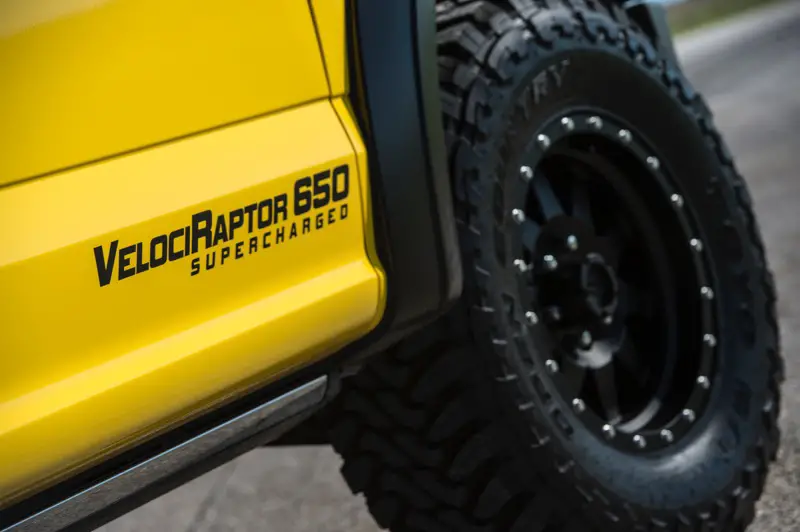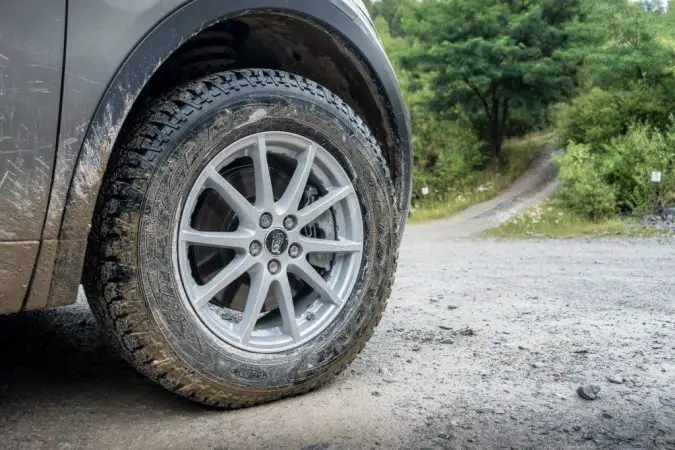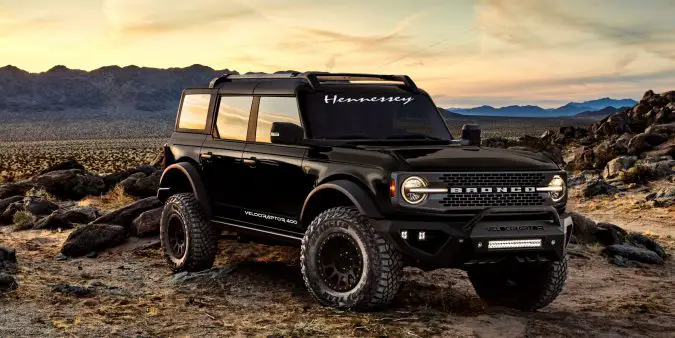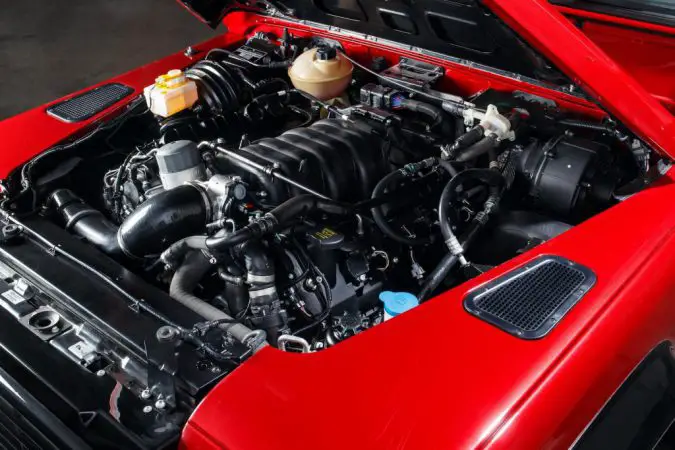Are you planning on installing bigger wheels on your truck and do you want to learn the truck wheel size? If that is the case, then you are at the right place because we are going to cover a lot when it comes to installing bigger wheels on your truck.
Getting the proper information before you install bigger tires on your truck is crucial. Because not every tire will fit your truck. For some wheel sizes, you need to make adjustments in advance. You just don’t want to install bigger tires on your truck and end up with a truck that you cannot drive since the tires are so large that they are taking the whole wheel well and you basically cannot even turn the wheel.
Another aspect that is important to know when it comes to truck wheel size is the advantages and disadvantages of installing bigger tires on your truck. Since there are quite a lot of positives and negatives of doing so on your machine. But you shouldn’t worry because we are going to cover every important piece of information you need to get the best wheels and tires for your truck.
In this article, first, we learn how to understand the truck wheel size, then we will move on to understanding the tire size. Later we are going to discuss the advantages and disadvantages of installing big wheels on your truck. And also the modifications that you need to make for installing these bigger wheels. So, if you want to learn more, follow along.
Does Truck Wheel Size Matter?
Yes, it matters quite a bit. The bigger the truck wheel size the better the performance of the truck. Trucks need that extra grip when it comes to towing, hauling, or going off-road.
That is something that you cannot properly do with the skinny tires with a little tread that the truck comes equipped from the factory. The meatier the tires, the more performance you get from the truck, and the better driving characteristics you have.
But this doesn’t always have to be the case since if you go overboard, you can do more harm than good and end up with a truck that is extremely difficult to drive and maneuver. As you know, every mod has to be done tastefully and a lot of things need to be taken into consideration before you even decide to go after this mod and equip your truck with a bigger truck wheel size.
It is also worth noting that you cannot fit any tire to any wheel size. Depending on the tire that you want to install, you will need the correct wheel for it. Because you cannot install 18-inch tires on 17-inch wheels. This is impossible since the tires will be quite bigger than the truck wheel size can handle.
But more on these aspects, we are going to cover in the following chapters where we are going to help you understand truck wheel size as well as tire size. We will go in-depth so, buckle up and follow if you want to learn more on these core aspects of performing an upgrade on your truck.
Understanding Truck Wheel Size
Let’s first discuss the truck wheel size. Since wheels are the most important. Based on the wheels you pick the right tires to mount them. So, what is important to know when you want to install a bigger truck wheel size?
1. Bolt Pattern
The first thing you need to know is the bolt pattern that you have. There are a ton of bolt patterns out there on the market and not all wheels fit every hub. The choice of a hub is to the manufacturer itself. So, what bolt patterns are out there?
Well, there are plenty of them, there are 4 bolt patterns, 5 bolt patterns, and 6 to 8 bolt patterns. But most of the wheels that you will see out there are 4 or 5 bolt designs. This means that you are limited to choosing wheels that have 4 bolts instead of 5 and if you purchase 5 bolt wheels, you will not be able to mount them properly since they will not like to fit your hub.
You can change the hub though but this will be a bit costly work since hubs are not cheap and you can expect to pay a few hundred bucks to replace all four of them. But if this allows you to get your favorite truck wheel size then it’s worth it.
2. Truck Wheel Diameter
The diameter and width are also important when learning the truck wheel size. Why is this the case? Because based on the diameter you learn what tires will be a great fit for your wheels.
The wheel diameter is measured in inches. As you know, the diameter is measured from one end of the wheel to the other end of the wheel.
The average wheel diameter these days is about 16 inches. But most modern cars nowadays go for up to 19, 20, and even up to 21 inches in diameter. Which is crazy. But people like bigger wheels so car manufacturers are installing them on cars.
The standard truck tires are usually smaller in diameter. But people often change these factory wheels with a bigger truck wheel size to improve the looks of their trucks.
Also, it is worth noting that the bigger the diameter of the wheel, the bigger the width of the tire. So if you want to install 20-inch wheels, you could easily end up with wider tires. The wider the tires the more grip. More grip equals more energy spent and also more money spent on gas. So, because of this, plan your upgrade very carefully. You don’t want to ruin your truck’s performance, especially if it has a weaker engine.
3. Truck Wheel Offset
The last important thing when understanding truck wheel size is the offset of the wheel. There is a positive offset and a negative offset. But what does this mean in the first place?
Well, the offset is the mounting surface of the vehicle. In wheels with positive offset which are most of the wheels that you are seeing out there on the roads. The offset is positive since the lug nut pattern is flush with the vehicle’s body.
But when you have a negative offset, the lug nut pattern is pulled inward of the vehicle. When you have a negative offset the wheels are far wider and go an inch or more on the outside of the truck. If you want to install wheels with negative offset, you need to also add fender flares since these negative offset wheels can make the truck look funny.
Many people that are running the Carolina squat are using negative offset. So, if you want to learn how it looks you can google it.
What is good with negative offset is that you don’t need to install wheel spacers to make your wheels look wide. Something essential when you have positive offset wheels. So, that’s about it when it comes to truck wheel size, now let’s see how you learn the tire sizes.
Understanding Truck Tire Size
We have covered the truck wheel size, now let’s learn something more about the truck tire size. Knowing the wheels is essential since you need to learn which tire size you need for these wheels. Let’s say that you need 16-inch wheels for a passenger car. When picking the tires, you will probably come across something like this P205/55/R16. So, what does this mean in the first place? Let’s elaborate.
The P is for a passenger vehicle. This means that this tire is good for passenger cars as well as lightweight SUVs. If you go for truck tires, you will probably come across LT. LT is referring to light trucks. This tire will fit all light trucks as well as full-size SUVs. And the last type is the ST. The ST refers to a special trailer. Meaning that these tires are for big trucks and trailers.
We understood what all the lettering means. Now let’s learn what the other numbers mean. 205 is the width of the tire. Meaning that the tire is 205 millimeters wide. Then is the number 55. This number indicates the width of the sidewall. The bigger the sidewall the bigger the number. This is also in millimeters.
And last is the wheel diameter. This diameter measurement indicates the truck wheel size. So, if you want to put 16-inch tires on a 15-inch wheel, you will not be able to do so. You still need 15-inch tires. And based on the truck wheel size also known as the diameter, you should move on to look for specific tires for this wheel.
That’s basically it when it comes to truck wheel size. Now let’s move on and discuss the advantages and disadvantages of bigger wheels.
Advantages Of Running Big Truck Wheel Size
We learned the truck wheel size. Now let’s discuss more on the advantages and disadvantages of running bigger wheels and tires. Knowing these things is important since you will be able to tell if these bigger wheels and tires are the right for you and your application. Since not all wheels and tires work with every application out there. First, we will cover the advantages and then we will move on to the disadvantages of running big wheels and tires.
More Grip With Bigger Wheel Size
The first advantage of installing bigger wheels and tires is the increase in the grip that you will get with the beefier tires. You will drive on any road and the truck will behave really well.
This is owed to the bigger surface that is sticking to the road. The more gripping surface, the better the truck will pull. So, if you want to go off-road or drive in similar conditions where is a lot of mud and bad driving conditions. Learning the wheel size and installing bigger wheels will be your best bet on tackling these obstacles.
Better Stability
In addition to getting more grip, you also get more stability with bigger tires. The thicker the tire, the better the chance to stick and keep you on the road. That’s why installing beefier tires will transform your truck and will make it drive like it’s on rails.
There is nothing better than stability, but don’t let this fool you and make you want more and more speed. This self-confidence has thrown a lot of drivers into the hospital. Trucks simply don’t handle as cars do. So, the bigger the wheels, the harder for the truck to turn on corners.
And if you go in the corner with too much speed, this could be fatal. So, the best is to use the recommended truck wheel size and tire size if you want to have the best result.
Improved Looks With Bigger Wheels
The last benefit of bigger wheels and tires would probably be the improved looks of the truck. Bigger wheels simply look better and greatly improve the looks. They are eye-catchers.
These vehicles also sell quite better than vehicles with smaller diameter wheels. That’s why even carmakers are pushing bigger and bigger wheels on their cars. With truck wheel size that was almost unimaginable 15 or 20 years ago.
So, if you want to make your truck one of the best-looking vehicles like there. Get a set of aftermarket wheels and make it really unique like nothing else on the road. You might pay more but the end result will be completely worth it and you will enjoy your truck even more.
Disadvantages Of Running Big Truck Wheel Size
Now let’s discuss the disadvantages of installing bigger tires on your truck. It is also quite worth noting that there are not only benefits but also some downsides of running big truck wheel size. So, what are the disadvantages? Let’s elaborate.
Bad Fuel Economy
You can expect that whenever you install bigger wheels and tires on your truck that your fuel economy will drop significantly. So, why is this the case?
Well, this is the case because these tires have a bigger footprint. Meaning that they require more energy to roll on the street. Especially if they are off-road tires with big treads.
With these tires, you can expect to lose a few mpg. The bigger the tire and truck wheel size, the worse the fuel economy will get. So, if you do this upgrade tastefully you will not lose a lot of fuel economy. But if you go overboard, you will lose more in this aspect.
Increased Wear
Another downside of installing a bigger truck wheel size than the factory recommended specs is the increased wear of the tires. Bigger tires will wear far more than skinnier factory tires.
So, you can expect to go through the sets of tires much quicker if you are having a bigger truck wheel size than the factory wheel size.
This might hurt your wallet since bigger tires are also quite more expensive than cheaper ones and are not for everybody’s budget. Planning your budget in advance will make you sure that you can run a beefier truck wheel size on your truck.
Possible Engine And Transmission Damage
Yes, that’s right, engine and transmission damage can also happen if you are running a bigger truck tire size than the factory one. Especially if this is a truck that is low-powered.
As you know, not all trucks are born equal. If you are running a smaller displacement engine in it like a V6 or something similar, the wear and tear on it can be much bigger than running a bigger truck size on a diesel let’s say.
You will need to make sure that your truck is powerful enough to run these tires. You cannot just jump from 15 inches to 21 inches and call it a day. The engine will suffer as well as the transmission. So, they will start to wear much quicker with these tires than the stock ones. So, it is worth paying attention to this stuff if you don’t want to regret it in the long run.
You Cannot Fit them Without Modifications
Another downside of getting bigger truck wheel size is that you will not be able to fit them without modifications.
We are talking here about bigger tires that differentiate from the stock ones in a couple of inches in size. For the fitting, these sizes modifications are needed to be done if you want them to make them fit.
You will probably also need to take a buzz saw and cut the corner of your front bumper if you want to be able to turn the wheel from side to side. This is the case because the bigger wheel will start to rub with the bumper and you will not be able to turn the wheel completely.
But more on that and other modifications needed we are going to discuss in the following chapters where we will go in-depth on the ways you can accommodate this bigger truck wheel size.
Do I Need To Lift The Truck If I Want To Add Bigger Truck Wheel Size?
Another thing that is important to consider before you get a bigger truck wheel size is that you will also have to lift the truck before you make this mod possible. Lifting the truck is an essential step that has to be performed if you don’t want to face problems when you install the bigger truck wheel size.
It is worth noting that there are a few types of lifting that we are going to cover next. Knowing these ways will help you out which method of lifting you will need if you want to lift the truck accordingly based on the truck wheel size and the tires you are running.
1. Suspension Lift
The simplest type of lift that you can do on your truck is a suspension lift. There are some ways of lifting the suspension for a few inches. This is made possible by installing larger shocks or adjusting the already existing ones if they have the ability of adjusting. If they don’t have the option to adjust, the only way around it would be to go to the following method.
2. Leveling Kit
A leveling kit would probably be the first thing that comes to your mind when planning on installing a bigger truck wheel size.
Leveling kits are cool, they don’t make the truck look obnoxiously tall and offer you a tasteful upgrade over the existing suspension lift. And also they allow you to fit larger wheels and tires in the wheel wells. But if you want to go a step further, there is always something more extreme.
3. Lift Kit
And the most extreme way to lift your truck is by installing a proper lift kit. You can purchase these kits online and lift your truck in the air as much as you can. Depending on your desire to lift the truck you will look for a specific kit. Someone wants a 2-inch lift, someone else wants 4 or 5 inches of lift. Anything is possible with a lift kit.
Cost To Install Bigger Truck Wheel Size?
The cost to install a bigger truck wheel size is expensive. The wheels are expensive and could cost you a couple of grand as well as the tires can cost a few hundred dollars each.
Then you need to think about lift kits or leveling kits that can also be a few hundred bucks. In the best case, you are going to pay about $3,000 for a bigger truck wheel size. In the worst case, more than $6,000. It greatly depends on you and your budget.
Facts about Changing Wheels and Understanding Rim Sizes
- Changing your rims can affect your vehicle’s ride quality and performance, but it is possible to install different wheels and rims on your car or truck.
- Before changing the tire sidewall height, tread width, or rim size, it’s important to talk to experts to understand how it will affect your vehicle’s suspension, gearing, and bodywork.
- Wheel diameter is the fifth set of numbers and letters on your tire sidewall and represents the distance between the two bead seat areas where the tire is sealed onto the wheel.
- Wheel width is the distance from each bead seat (from inside to the outside) and the offset determines how the wheel and tire set aligns with the wheel well.
- Offset is how far inward or outward the mounting surface is in reference to the center line of the wheel and determines whether your rims and tire will be pulled inward or stick out from the body of the vehicle.
- To ensure a set of rims fit properly on your vehicle, you’ll need the hub size, wheel center bore measurement, and number of wheel studs, including the distance between those studs.
- Most vehicles come with a 4-, 5-, 6-, or 8-lug pattern, which helps narrow your wheel or rim choices.
- To measure a bolt pattern, you’ll need to measure from the center of two holes across from each other for a 4-lug pattern, the outside of one wheel stud hole and the center of the opposite for a 5-lug pattern, and the center of one hole to the center of the opposite wheel stud hole for a 6- or 8-lug pattern.
- It’s important to get the right fit for your vehicle to avoid vibration or rubbing on suspension components or vehicle body parts.
- Consult with professionals to get accurate measurements and ensure you get the right rims for your vehicle.
Conclusion
In this article, we have covered quite a bit when it comes to truck wheel size. First, we learned what is truck wheel size and why it matters. Then we covered what does the lettering on the wheels means and what tires could fit the specific rims that you want to use and as we concluded, you need to focus on the wheel diameter number which is in inches and is last.
Then we covered the advantages and disadvantages of installing a bigger wheel size on your truck. We learned that big tires look good but they are not that fuel-efficient and you can expect a drop in fuel economy. Lastly, we covered the lift options that are out there if you want to install bigger wheels and tires and also the cost of this work.




